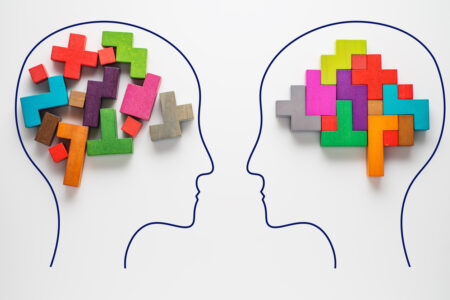Physiological synchrony: key to dating success?
Finding love today is very different from earlier generations. Online dating has grown rapidly. In 2014 13% of Dutch relationships developed online; in 2003 less than 2%. The development of relationships is also changing. What effect will this have?
In the modern world of online applications, where the movement ‘swipe right, swipe left’ has become more common than writing down your phone number, research on match-making is more relevant than ever. The internet has created a new phenomenon: the possibility to construct a self-image. Millions of people frequently upload new profile pictures, update their timeline post, and comment in order to display the best versions of themselves to the outside world. Online applications allow people to find a potential partner based on these profiles, before they even meet face-to-face. This makes dating a faster and more controllable process. Nevertheless, this rather ‘consumerist’ way of finding a partner may have its shortcomings. In a dating world in which success can be determined by brief interactions, single people have only a short time to make a good impression. While someone may seem a perfect match on tinder, we may feel nothing when we meet the person in real life. There is simply no ‘click’, no ‘sexual chemistry’. In our research, we aim to highlight the important aspects of face-to-face dating
Is attraction a matter of physiological synchrony?
When people are asked about their prospective partner, they describe someone who is intelligent, attractive, and has a good sense of humor. However, if you ask them to talk about love, they often speak in terms of physical sensations. This is because the emotions that people experience are automatically reflected in facial expressions, body postures, and physiological changes indicating arousal which may be visible to the naked eye (e.g., pupil dilation) or invisible (e.g., heart rate and skin conductance, sweat). The body plays a fundamental role in how emotional experiences develop, and reciprocally, emotional state is reflected by changes in physiological state. Although bodily changes do not form or define an individual’s experience, they are nevertheless a crucial part of how the body and mind work together to form subjective experiences.
Intriguingly, within social interactions, physiological responses (heartbeat, pupil size, skin conductance) can synchronize autonomically, which is striking because physiological states are uncontrollable and invisible to an interaction partner. Physiological synchrony occurs within a variety of social relationships, including between strangers, between mothers and infants, and between romantic partners. The level of physiological synchrony has been associated with beneficial and detrimental relational outcomes, such as empathy-enhanced group performance and marital conflict. On the basis of this evidence, we test whether it is possible to measure sexual attraction purely by behavioral and biological means. We propose that ‘sexual attraction’ may be a matter of synchrony between these nonverbal processes.
Blind Date Experiment
To test this, we conducted a speed-dating experiment. We paired couples randomly in a dating cabin; a visual barrier prevented the couples from seeing each other before the experiment began. The visual barrier was then removed and the date (experiment) started. Using state-of-the-art equipment, including two eye-tracking glasses, three cameras, and electrodes, we tracked participants’ emotional responses (heart rate, skin conductance, pupil change) throughout their first date. With these powerful tools we could look deep under the participants’ skin, into their emotions. We could see how excited or indifferent participants became as the date progressed. We also tested whether sexual attraction was a matter of synchrony between them. Metaphorically speaking, just like musical instruments, human bodies and brains synchronize with each other, and the better they synch, the more likely people are to fall in love.
Real-life Implications?
Apart from increasing our understanding of human mating behavior, this research may bring applicable contributions to modern society. If we consider that technology such as gaze measures, pupillometry, facial expression recognition software etcetera is already in use, it is only a matter of time before we will be able to apply these technologies online. Hypothetically speaking, apart from matching people on the basis of their profiles and conversations, in the future online applications may also be able to predict (on the basis of physiological synchrony) whether people are good matches at the emotional/physiological level. Who knows, maybe one day we will be able to physically and emotionally connect via touch-screens.
But so is sexual attraction a matter of synchrony? We can’t tell you that yet. We first need to collect more data. So if you are single, you’re welcome to join us at the InScience Festival in Nijmegen (8-12 November) and see if you can find someone who matches your vibe!





